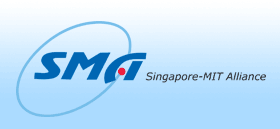Project Abstract:
Production Strategy
The Primary objective is to layout the production plan for launching
the WG-8 Craft designed by the Germans in to production. The
Current WG-8A prototype is a hand built machine, using wet laidup
of glass and carbon fiber throughout the airframe. The Proposal
is to look at an alternative process and its implementation with
respect to 3 important parameters. Cost Analysis, Process Time
analysis (Manufacturing lead time + Cycle Time), Reliability &
Repeatability of the composite specimen. The prototype WG-8 was
manufactured not taking in to considerations the Lead times and
Cycle times for each component. Hence there was no specific
production line or procedure associated for assembly of its
components. For launching a product in to the market one needs
to have a specific and well planned out manufacturing flow
assembly line in order to have optimum utilization of the resources
and to have a continuous production at a low cost. The Process
Proposed will be validated by conducting testing on specimens.
This is important since using a new process may not yield the same
material properties as the previous process. Hence Testing would
ensure repeatability and reliability for the process suggested.
Propulsion Strategy
One of the most expensive and important components of the WG8
Wig-craft is the propulsion system. The WG8 is driven by a single
engine drive system which is then coupled to a gearbox which
simultaneously drives 2 shafts with 2 independent propellers
attached at their respective ends. The shafts from the gearbox are
connected to the shafts holding the propellers via a universal joint.
This current arrangement is highly inefficient because the take off
requires about three times the amount of thrust as that needed for
cruise and so the only about 40% of the engine capacity is used.
The use of a single engine also poses a problem of reliability and
further inefficiency. In addition the propulsion system is custom
built and therefore expensive and has a higher lead time which
becomes an issue for commercial production of the craft. The project
aims to investigate the feasibility of off the shelf engines that are
currently available in the market to replace the current engine and
to determine the pros and cons of a single drive vs a dual drive
system to implement into the propulsion system. The thrust and
power as well as other relevant requirements of the craft shall be
first determined from the propeller characteristics, geometry etc
which would then be translated to engine specifications. Once
determined these would help identify engines which match the
requirements whether single drive or dual. |


